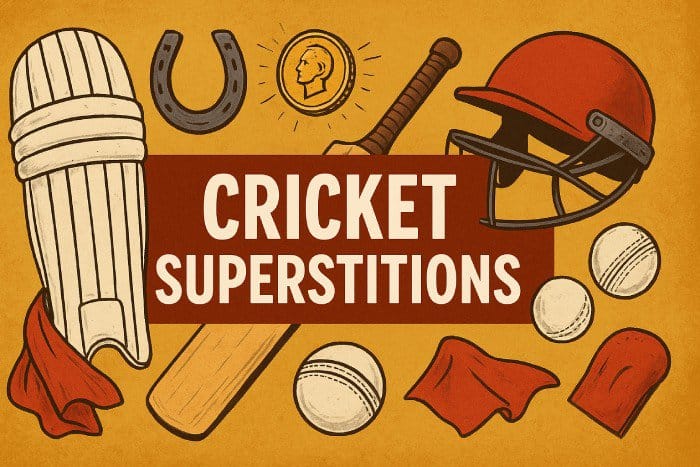
Cricket is often called a game of skill, strategy, and patience – but there’s also a quirky side to it. From wearing the same lucky gloves to stepping onto the field with the right foot first, many cricketers follow strange cricket superstitions and rituals that they believe bring them good fortune.
While science may not back these practices, fans love knowing these little habits because they give us a glimpse into the personal side of cricketing legends. Let’s explore some of the most famous (and unusual) cricket superstitions.
Why Do Cricketers Believe in Superstitions?
Sports can be mentally exhausting. Cricketers spend hours under high pressure, knowing that a single mistake can change the course of a match. Superstitions and rituals often act as:
- Confidence boosters – helping players feel in control.
- Stress relievers – creating comfort in familiar routines.
- Mental anchors – reinforcing the belief that luck is on their side.
In cricket, where margins are thin, even the world’s best players sometimes rely on little quirks to steady their nerves.
Famous Superstitions in Cricket
1. Sachin Tendulkar – Lucky Pads
The “God of Cricket” was known for his batting rituals. Sachin Tendulkar had a superstition of always putting on his left pad before the right one. He followed this ritual religiously throughout his career, believing it helped him focus better.
2. Steve Waugh – The Red Handkerchief
Former Australian captain Steve Waugh always carried a red handkerchief given to him by his grandmother. He believed it brought him luck, and fans often spotted him pulling it out during matches.
3. Virender Sehwag – No Helmet Sticker, No Practice
Sehwag had a unique superstition – he never wore a helmet with the team logo sticker. He also avoided practice sessions before big innings, saying he liked to walk into matches with a “fresh mind.”
4. Shane Warne – Lucky Earrings
Legendary spinner Shane Warne often credited his good luck to a pair of earrings he wore. He believed they gave him confidence, especially during crucial matches.
5. Ravi Shastri – Lucky Coin Toss Ritual
Former Indian cricketer and coach Ravi Shastri believed in following the same coin toss routine whenever he captained. He thought small repetitions could bring consistency in results.
6. Marnus Labuschagne – Obsessive Habits
Modern Australian star Marnus Labuschagne is famous for his quirky behaviours – like marking guard repeatedly and constantly talking to himself while batting. Fans joke that his “rituals” are almost as entertaining as his batting.
Cricket Superstitions Beyond Individuals
- Teams and Dressing Rooms: Some teams avoid sitting in the same spot after a loss, believing bad luck is attached to that corner of the room.
- Numbers on Jerseys: Certain players prefer or avoid particular jersey numbers due to personal beliefs.
- Toss Rituals: Captains often carry a particular coin or use the same words every time at the toss.
Do Superstitions Really Work?
There’s no scientific proof that wearing a lucky charm or repeating a ritual can change the outcome of a cricket match. However, sports psychologists agree that rituals give athletes a sense of stability and reduce anxiety. In a high-pressure game like cricket, that mental boost can make all the difference.
Final Thoughts
Cricket may be a game of bat and ball, but these quirky superstitions add charm to the sport. They remind us that even the greatest players – whether Sachin Tendulkar, Steve Waugh, or Shane Warne—have little human habits they hold onto for luck.
Next time you watch a match, look closely – you might just spot your favourite cricketer following a strange ritual that keeps them grounded.
Also Read –
Leave a Reply